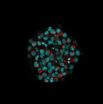(Press-News.org) Alcohol industry magazine ads reminding consumers to "drink responsibly" or "enjoy in moderation" fail to convey basic public health information, according to a new study from the Johns Hopkins Bloomberg School of Public Health.
A report on the research, published in the September issue of Drug and Alcohol Dependence, analyzed all alcohol ads that appeared in U.S. magazines from 2008 to 2010 to determine whether messages about responsibility define responsible drinking or provide clear warnings about the risks associated with alcohol consumption.
According to the study, most of the ads analyzed (87 percent) incorporated a responsibility message, but none actually defined responsible drinking or promoted abstinence at particular times or in certain situations. When responsibility messages were accompanied by a product tagline or slogan, the messages were displayed in smaller font than the company's tagline or slogan 95 percent of the time.
Analysis of the responsibility messages found that 88 percent served to reinforce promotion of the advertised product, and many directly contradicted scenes depicted in the ads. For example, a vodka ad displayed a photograph of an open pour of alcohol with a tagline that implied the drinker had been partying all night. In small lettering, the same ad advised the audience to enjoy the product responsibly.
"While responsibility messages were present in almost nine out of ten ads, none of them provided any information about what it means to drink responsibly," says study leader Katherine Clegg Smith, PhD, an associate professor in the Department of Health, Behavior and Society at the Johns Hopkins Bloomberg School of Public Health. "Instead, we found that the vast majority of responsibility messages were used to convey promotional information, such as appealing product qualities or how the product should be consumed."
Federal regulations do not require "responsibility" statements in alcohol advertising, and while the alcohol industry's voluntary codes for marketing and promotion emphasize responsibility, they provide no definition for "responsible drinking."
"The contradiction between appearing to promote responsible drinking and the actual use of 'drink responsibly' messages to reinforce product promotion suggests that these messages can be deceptive and misleading," said David Jernigan, PhD, director of the Center on Alcohol Marketing and Youth at the Johns Hopkins Bloomberg School of Public Health.
A better option for promoting responsible drinking in advertising would be to replace or supplement unregulated messages with prominently placed, tested warning messages that directly address behaviors presented in the ad and that do not reinforce marketing messages, Smith says.
"We know from experience with tobacco that warning messages on product containers and in advertising can affect consumption of potentially dangerous products," she says. "We should apply that knowledge to alcohol ads and provide real warnings about the negative effects of excessive alcohol use."
INFORMATION:
The research was funded under a cooperative agreement from the Centers for Disease Control and Prevention.
"Defining strategies for promoting product through 'drink responsibly' messages in magazine ads for beer, spirits and alcopops" was written by Katherine Clegg Smith, Samantha Cukier and David H. Jernigan.
'Drink responsibly' messages in alcohol ads promote products, not public health
Nine out of 10 encourage responsibility; none provide real information about what that means
2014-09-03
ELSE PRESS RELEASES FROM THIS DATE:
Live from inside a battery
2014-09-03
Mobile phones, digital cameras, camcorders, notebooks: They all run on lithium-ion batteries. These are characterized by high energy densities while remaining small and light enough to be used in portable devices. "A lithium-ion battery can store three to four times the energy of a comparably sized nickel-cadmium battery," explains Dr. habil. Ralph Gilles, scientist at the Neutron Source Heinz Maier-Leibnitz (FRM II). Even temperature fluctuations and longer-term storage do not pose problems for lithium-ion batteries.
These advantages make lithium-ion batteries a key ...
Rising risk of failed seasons as climate change puts pressure on Africa's farmers
2014-09-03
ADDIS ABABA, Ethiopia (2 September 2014)—Small-scale family farmers across Africa— already struggling to adapt to rapidly rising temperatures and more erratic rains—risk being overwhelmed by the pace and severity of climate change, according to the 2014 African Agriculture Status Report (AASR).The analysis, prepared by the Alliance for a Green Revolution in Africa (AGRA), with contributions from several African scholars, provides the most comprehensive review to date of how climate change will affect Africa's smallholder farmers and highlights the most promising paths to ...
Why HIV patients develop dementia
2014-09-03
Since the introduction of the combination anti-retroviral therapy (cART) in the mid-90s, the life expectancy of HIV patients has significantly improved. As a result, long-term complications are becoming more relevant: almost every second HIV patient is affected by neurocognitive disorders, which can lead to dementia. It has not as yet been fully understood how these disorders occur. Researchers from Bochum have now successfully demonstrated that infected cells activate specific immune cells in a patient's brain, which subsequently display harmful behaviour and lead to the ...
A fix to our cell-phone waste problem?
2014-09-03
When it comes to cell phones, the world is stunningly wasteful. Customers will buy more than 1.8 billion new ones by the end of this year only to abandon almost half of them to drawers, and they'll recycle a mere 3 percent of them. But creative and enterprising efforts are underway to reverse the seemingly unstoppable tide, says an article in Chemical & Engineering News (C&EN), the weekly news magazine of the American Chemical Society.
Alex Scott, a senior editor at C&EN, notes that there is much to be recovered and re-used from a cell phone. An average mobile contains ...
CNIO experts discover the genomic origin of telomere protectors
2014-09-03
RNA is one of the most primitive molecules associated with life that has awakened most interest over the last decade; a sister molecule to cellular DNA from which it originates via a process called transcription. Seven years ago, the groups of María Blasco at the Spanish National Cancer Research Centre (CNIO), Spain, and Joachim Lingner in Switzerland discovered that the DNA regions that contained telomeres, despite their compact and hard-to-access structure, generated RNAs that they christened TelRNAs or TERRA.
Now, a study published in the journal Nature Communications, ...
Breakthrough for carbon nanotube solar cells
2014-09-03
Lighter, more flexible, and cheaper than conventional solar-cell materials, carbon nanotubes (CNTs) have long shown promise for photovoltaics. But research stalled when CNTs proved to be inefficient, converting far less sunlight into power than other methods.
Now a research team led by Mark Hersam, professor of materials science and engineering and the Bette and Neison Harris Chair of Teaching Excellence at Northwestern University's McCormick School of Engineering, has created a new type of CNT solar cell that is twice as efficient as its predecessors. It is also the ...
Ethanol fireplaces: The underestimated risk
2014-09-03
Go to the DIY-market in the morning, buy the fireplace, and that evening, enjoy the cozy warmth and homey atmosphere of your new ornamental hearth. The suppliers of ethanol fireplaces are doing a brisk business with the lightweight, easy-to-install ornamental stoves with no chimney. However, caution is warranted when operating these fireplaces, because ethanol is a fuel that, together with the air, forms a highly combustible atmospheric mixture. If ethanol runs out when filling the combustion chambers and it ignites, then the entire room could go up in flames.
On top ...
Fingerprints for freight items
2014-09-03
Thousands of freight items are shipped by plane every day, around seventy percent of them in airliners. Stringent controls are supposed to prevent hazardous substances such as explosives from being smuggled on board. Screening procedures, such as x-ray scanning of freight, are time consuming and costly and have to be repeated in the event of suspicious circumstances. Easily verifiable features that verify that a freight item is "secure" have been lacking until now.
Researchers at the Fraunhofer Institute for Factory Operation and Automation IFF in Magdeburg are working ...
A 'clear' choice for clearing 3-D cell cultures
2014-09-03
VIDEO:
Using a confocal microscope, researchers can study a cleared spherical 3-D tissue culture at any depth. The video begins on the near surface and exits on the far side of...
Click here for more information.
PROVIDENCE, R.I. [Brown University] — Because Brown University biomedical engineering graduate student Molly Boutin needed to study how neural tissues grow from stem cells, she wanted to grow not just a cell culture, but a sphere-shaped one. Cells grow and interact ...
Parrots go to carpentry school
2014-09-03
This news release is available in German.
Scientists from Oxford University, the University of Vienna, and the Max Planck Institute at Seewiesen have shown that a spontaneous innovation by a Goffin's cockatoo can spread to other conspecifics by social learning.
After observing that an adult male Goffin cockatoo named Figaro spontaneously started to sculpt stick tools out of wooden aviary beams and used them for raking in nuts behind grit, the researchers wondered what effect, if any, such an individual technical invention might have on social companions. They used ...
LAST 30 PRESS RELEASES:
Anxiety and insomnia may lower natural killer cell count, potentially repressing immune function
How parasitic, asexual plants evolve and live
Research spotlight: A subset of patients with depression could benefit from anti-inflammatory treatment
New fully digital design paves the way for scalable probabilistic computing
Membrane electrode assembly design for high-efficiency anion exchange membrane water electrolysis
U.S. debt ceiling disputes show measurable impact on global crude oil markets
Climate extremes triggered rare coral disease and mass mortality on the Great Barrier Reef
Direct observation reveals “two-in-one” roles of plasma turbulence
Humans rank between meerkats and beavers in monogamy ‘league table’
US fossil reveals early mass-burial event and ancient microbial attack
Sedative choice could improve outcomes for breathing tube patients
New superconducting thin film for quantum computer chips
Simulations reveal protein "dynamin" constricts cell membranes by loosening its grip
Nearly 1 in 5 UK emergency department patients cared for in corridors/waiting rooms
Heavy energy drink intake may pose serious stroke risk, doctors warn
Violence against women and children among top health threats: New global study reveals disease burden far larger than previously estimated
Predicting who is at risk of developing type 1 diabetes, as new drugs now available
New gene-mapping method unlocks hidden drivers of cancer
Ocean current and seabed shape influence warm water circulation under ice shelves
Call to increase funding for ‘invisible’ Deaf victim-survivors of domestic abuse
University of Maryland School of Medicine names distinguished scientist and academic leader Gerald M. Wilson, PhD, as Chair of the Department of Biochemistry and Molecular Biology
Receptors in mammary glands make livestock and humans inviting hosts for avian flu
Icy hot plasmas
Treating adults with autism: Maryland Clinical Center offers national blueprint for care after pediatric transition
University of Phoenix College of Doctoral Studies releases white paper on reclaiming control to build workforce resilience
NCCN Summit seeks to improve care for veterans and first responders with cancer from line-of-duty exposure
ERC Consolidator Grant for soft robotics researcher
Dual-action arts and wellbeing program transforms dementia care
The global plastic waste trade contributes to coastal litter in importing countries, study shows
UT Dallas partners with Tech Mahindra on AI innovation
[Press-News.org] 'Drink responsibly' messages in alcohol ads promote products, not public healthNine out of 10 encourage responsibility; none provide real information about what that means



